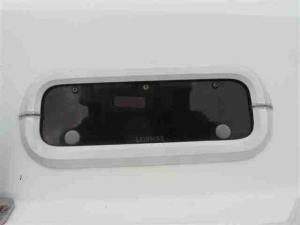More on Portlight Leaks
Richard Herbst
August, 2007
Hull #: C380 #93
Last month’s [May 07] article on repairing portlight leaks omitted one source of a leak that is very easy to fix. On my boat (C380, S/N 93), the 2-horizontal seams in the Lewmar portlight’s frame is a primary source of leakage and the fix is really simple. My boat had been in the Gulf area for many years with the result that sunlight beat these seams to death. To fix, just run a bead of sealant across each seam and the leak stops (see photo).
Note that the portlight frame is hollow, so after sealing the seams, you may have to take a brisk sail to heel and spill the residual water out of the already present holes in the lower part of the frame. Before starting, put a towel there to catch the water.[Suggest removing trim ring;
You need to be logged in to see the rest of this content. Catalina380-IA members, please login.
To join please fill out a membership application (Association->Membership Application) and send a check to the address on the form.


